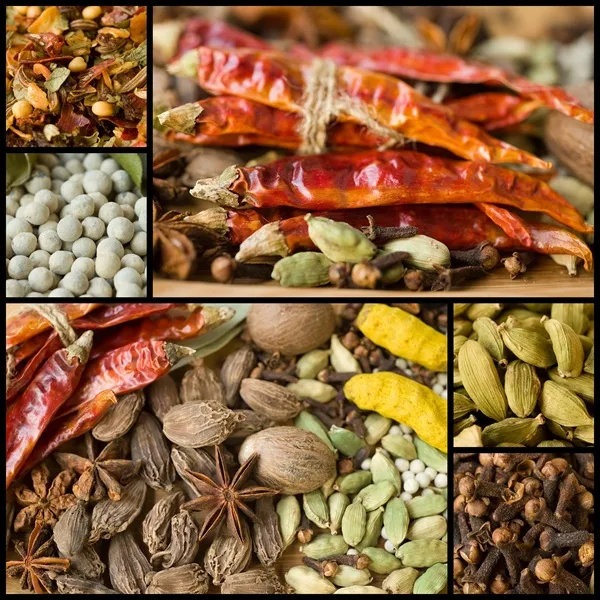Table of Contents
Cumin: The Spice That Transcends Borders
Introduction
Cumin (Cuminum cyminum) is one of the most widely used spices in the world, known for its distinctive earthy, nutty, and slightly peppery flavor. A staple in global cuisines, cumin is prized not only for its culinary uses but also for its medicinal properties and economic significance. This article delves into its health benefits, side effects, global varieties, cultivation, and more.
Health Benefits of Cumin
Cumin is packed with essential nutrients and bioactive compounds that contribute to numerous health benefits:
- Digestive Health: It stimulates enzyme secretion and aids digestion, reducing bloating and gas.
- Anti-Inflammatory Properties: Rich in antioxidants, cumin helps fight inflammation and oxidative stress.
- Blood Sugar Control: Studies suggest cumin can help lower blood sugar levels, making it beneficial for diabetics.
- Weight Loss Aid: It boosts metabolism and helps in fat reduction.
- Heart Health: Cumin lowers cholesterol levels and promotes cardiovascular well-being.
- Antibacterial & Antimicrobial: It helps combat bacterial infections.
Potential Side Effects and Allergies
While cumin is generally safe, excessive consumption may lead to:
- Heartburn and Acid Reflux: Due to its strong oils, it may aggravate GERD.
- Lowered Blood Sugar: Can be risky for diabetics on medication.
- Allergic Reactions: Some individuals may experience skin irritation or respiratory issues.
- Pregnancy Concerns: In high doses, cumin may induce uterine contractions.
Global Varieties and Their Characteristics
- Indian Cumin (Jeera): Strong, pungent, with a warm, earthy aroma. Used in curries and spice blends like garam masala.
- Middle Eastern Cumin: Earthy and slightly bitter, integral to falafel and kebabs.
- East Asian Cumin: Less pungent, commonly used in Sichuan dishes.
- Mexican Cumin: Milder in taste, a key ingredient in chili powder and Tex-Mex cuisine.
- Turkish Cumin: Robust, smoky flavor, often used in meat dishes.
Flavor, Texture, and Culinary Uses
- Flavor Profile: Warm, slightly sweet, nutty, and peppery.
- Texture: Available as whole seeds or ground powder.
- Uses in Cooking:
- Spices & Blends: Essential in garam masala, curry powders, and ras el hanout.
- Baking: Used in bread, rolls, and cakes for an earthy touch.
- Beverages: Cumin tea aids digestion, while cumin-infused coffee is popular in Middle Eastern cultures. In India it is an essential ingredient in Chai - Masala Tea.
- Savory Dishes: Essential in curries, stir-fries, soups, and meat rubs.
Cultivation, Climate, and Farming
Cumin thrives in warm climates with moderate rainfall. Major producers include:
- India: The largest producer, accounting for ~70% of global supply.
- Iran: Noted for high-quality black cumin.
- Turkey & Syria: Moderate production, mainly for regional use.
- China & Pakistan: Emerging players in cumin farming.
Water Usage & Climate Effects
Cumin requires well-drained, sandy loam soil and minimal irrigation, making it more drought-tolerant than other spices. However, rising temperatures and unpredictable rainfall patterns are affecting yields.
Storage, Shelf Life, and Spoilage Factors
- Shelf Life: Whole seeds last up to 3 years; ground cumin retains flavor for about a year.
- Spoilage Risks: High humidity leads to mold, pest infestations, and loss of aroma.
- Storage Tips: Store in airtight containers in cool, dry places to prevent degradation.
Global Trade and Economic Importance
- Major Exporters: India, Turkey, Iran, Syria.
- Major Importers: USA, UK, China, Germany.
- Economic Impact: The cumin trade is worth billions globally, influencing local economies and farmers' livelihoods.
Food Wastage and Sustainability
- Loss During Harvesting: Poor storage practices lead to significant spoilage.
- Consumer-Level Waste: Improper storage reduces potency, leading to waste.
- Sustainable Practices: Improving drying and storage facilities can reduce losses.
Conclusion
Cumin is more than just a spice; it is an integral part of global culinary traditions, health remedies, and economic activities. Despite its benefits, proper handling and sustainable farming are essential to ensure its continued availability and effectiveness. Whether in a steaming bowl of curry or a refreshing herbal tea, cumin continues to be a cherished and indispensable ingredient worldwide.









